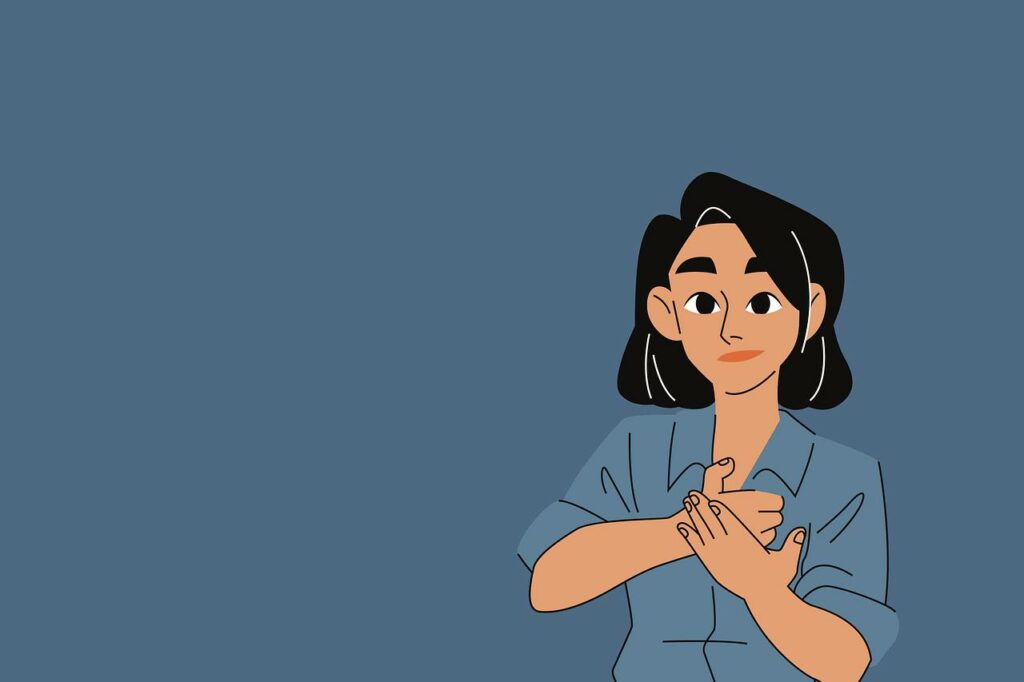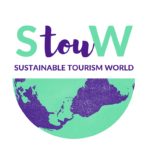Accessible tourism for deaf people
The second round of accessible tourism insights is dedicated to the best possible ways to accommodate deaf people.

As with the in-depth study on the blind, I describe the possibilities taking into account the booking stages.
Typical steps are:
- information search,
- Booking,
- arrival at the destination,
- stay, experience or visit,
- departure and return home.
Possible improvements
- Searching for information
A website with written text might be sufficient, but ideally, it should also have simultaneous sign language translation in the most important parts of social media. This allows a warmer welcome for potential guests with hearing disabilities.
- At the booking stage, having a chat or email is crucial, not just the oral mode.
Providing written information is key when it comes to travel details. From flight itineraries to hotel bookings and tour programmes, having everything in writing ensures deaf travellers can access crucial information independently. Digital travel apps and mobile devices are great for sharing essential details while travelling.
Use visual aids
Maps, diagrams and illustrations can guide deaf travellers to unfamiliar places and make exploration much easier. When providing directions or tour information, consider using visual aids alongside verbal instructions. Remember that a picture is worth a thousand words.
Offer support with sign language
Greetings, simple questions, and expressions of gratitude in sign language can help break the ice and create bonds. For travel agencies and tour guides, having staff who know sign language, even just a few basic signs, can be a game changer, creating a welcoming and inclusive environment for all travellers.
Lyons-Black, an Accessible Travel Specialist at Flight Center Independent, has advice for the tourism industry on how to make a disabled person’s travel experience as enjoyable as possible.
“Listen, really listen,” he says. “Disabled people know what they want to get out of an adventure and, together with an agent, can work out an itinerary that meets their travel goals. An agent should never assume what their client’s limitation might be. The last thing a client wants to hear is that you can’t do this in any way. I give my clients a two-and-a-half page document to fill out, then spend an hour getting to know them. This way, I learn the nature of their disability and can better advise them on what they need to consider and what to expect during their journey.
– Arrival at destination
Arrival at the destination should be facilitated both by personal means and by public transport. Therefore, the destination should invest in multiple channels of communication (with visible signs and spoken announcements with correct diction).
-Stay, experience or visit
There are some practical tips for hotels and hospitality:
- train all staff on how to communicate
- speak slowly and always upfront,
- be prepared to repeat the same sentence several times,
- try not to use language that is too technical,
- use physical contact, but always with discretion,
- avoid background noise that creates disturbance and discomfort for deaf people.
Use clear information: Add signs indicating the breakfast room, bar, toilets, the garden, and to the rooms.
Provide illuminated pathways or night lights to facilitate orientation.
To enable communication and not make the person feel isolated, equip rooms with:
- call alarms with vibrating or luminous information,
- writing material and telephones with visual alarms,
- alarm clock with a vibrating alarm,
- television with subtitled programmes.
For organised activities or when communicating with guests in general, it is always best to ask about their preferred mode of communication: written, lip-synchronous, gestural, or a combination.
Captions on everything. For deaf travellers who like to explore museums, shows or attractions, captions are the magic ingredient. Providing videos and displays with captions ensures that deaf travellers can fully immerse themselves in the experience without missing valuable information.
– The same communication rules apply when departing and returning home: multi-channel, with visual aids and, if possible, sign language videos.

I share some examples
The project “Accessible Museums for Deaf People” or, more briefly, MAPS (In Italian Musei Accessibili per le Persone Sorde). The project, conceived by the ENS Headquarters and co-financed by the Ministry of Labour and Social Policies, had two main objectives
- to create an online platform where all Italian museums or places of culture equipped with accessibility services for deaf people could be hosted;
- to organise training courses on museum accessibility for deaf people under 35 from all over Italy.
Accessibitaly.it was therefore created to realise the first objective; here, deaf people can easily find in one virtual place all those cultural realities where they can enjoy a complete experience and experience the profound pleasure aroused by art. On the site, you will find exciting proposals and magnificent places striving to be accessible.
Es 1
Castello Estense di Ferrara offers the Videoguide in Italian Sign Language and International Sign Language that accompanies the visitor along the museum itinerary. The video guide – which can be consulted on a tablet – is available at the ticket office; from the initial screen, the visitor can choose the contents according to the position in which they find themselves or navigate freely among the proposed cards, which also include games, a short test and the family tree of the Este family.
Es 2
MART, Casa d’Arte Futurista Depero and the Galleria Civica di Trento. For deaf visitors, a free video guide in Italian Sign Language was created, which accompanies the visitor through the permanent collections. Uploaded onto tablets, the video guide is available free of charge at the ticket office.
The MART, in collaboration with the ENS, has also made a LIS video available online with the most helpful information for visiting the museum’s three venues.
The museum also organises guided tours in LIS by appointment.
Es 3
The Royal Palace of Naples has created a DAI room, a room of universal accessibility dedicated to people with disabilities. The room is equipped with a tactile path for blind people, a cartoon for people with cognitive impairments, and a video with the history of the Royal Palace in LIS, which gives a detailed account of the museum’s history and its collection to the deaf visitor.
Sources
Hotel Loveno
https://www.hotellovenolakecomoitaly.com/accessibility-in-hotel-loveno-a-dream-or-a-real-possibility-2/
https://www.signsolutions.uk.com/how-to-create-inclusive-travel-experiences-for-deaf-travellers/
https://www.responsibletravel.com/holidays/accessible/travel-guide/deaf-and-hard-of-hearing
https://www.listentech.com/it/lavorare-insieme-per-rendere-il-viaggio-accessibile-a-tutti%2C-ovunque-e-in-ogni-momento/
https://www.intendime.com/intendimegazine/in-viaggio/persone-sorde-viaggiare/
https://www.anconatoday.it/economia/hotel-tre-querce-camerano-prima-camera-italia-non-udenti.html
Sara – tourism sector consultant
PS. Do you want to GROW your business with a POSITIVE impact… without huge investments? Sign up for the email list by clicking on START HERE!
Or click this link https://www.sustainabletourismworld.com/start-here/ to download my INFOGRAPHIC!
